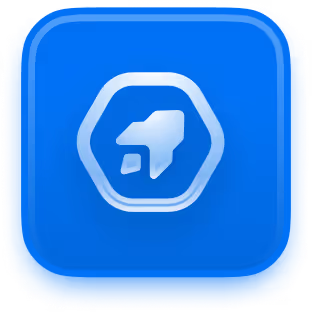
Data-Driven Audience Selection with Cold Email Software Tools

Ever wondered how businesses connect with audiences through cold emails, achieving high engagement and conversions? according to recent studies, personalized emails deliver six times higher transaction rates compared to non-personalized ones.
Using cold email software tools is essential for businesses to succeed and make meaningful connections in today's digital world. These tools help select the right audience based on data.
In this discussion, we will focus on the important parts of this approach. We will also understand its significance in improving outreach efforts. Additionally, we will provide practical advice to help you enhance your cold email skills. Ultimately, this will lead to real results for your business.
Define Your Target Audience
An essential first step in any marketing or outreach plan is defining your target market. It means finding out who is most likely to be interested in your message, service, or product. assemble information about market trends, rivals, and your industry.
Determine any gaps in the market and potential applications for your product or service. If you already have clients, use surveys to get input so you can learn about preferences, demographics, and reasons for selecting your good or service.
Know who your customers are and what they like. You can use Our Success.ai's lead finder tool to find and organize potential customers based on interests and information from social media and analytics. This helps you send messages that are special to each person, making sure they find it interesting and important.

These elements can be combined to provide a thorough profile of your target market. Your marketing efforts will be guided by this data, which will enable you to customize your outreach and messaging tactics to successfully engage the people or companies most likely to turn into clients.
Build a Quality Email List
Creating a high-quality email list is essential to your email marketing campaign's success. People on a good list are engaged and more likely to open, read, and respond to your emails.
Provide a clear and user-friendly sign-up form for visitors to your website so they can easily join your email list. Explain to them the benefits of subscribing, such as special offers, promotions, or timely updates.
To keep an active and clean email list, remove inactive subscribers and update contact details frequently. Track unsubscribe and bounce rates to find and fix any possible problems.
Creating a high-quality email list is a continuous process that needs deliberate preparation and persistent work. Concentrating on adding value to your subscribers' experience and preserving long-term engagement requires trust.
Segment Your Audience
A critical first step in developing specialized and targeted communication strategies is customer segmentation. Segmenting your audience entails breaking them up into more focused, smaller groups according to predetermined standards. This enables you to better adapt your content, offers, and messaging to each segment's particular requirements and characteristics.
Determine the standards that are pertinent to your company's goals and marketing strategies. These standards are based on location, purchase history, behavior, engagement level, or demographics.

Divide your audience into segments according to age, gender, income, level of education, and occupation. Segmenting your audience according to opt-in preferences will show respect for preferences. Divide subscribers who want to receive newsletters, for instance, from those who want to receive product updates.
Utilize CRM Integration
Utilizing Customer Relationship Management (CRM) integration in your business operations can significantly enhance your efficiency, organization, and customer relationship management. Select a CRM system that aligns with your business needs and integrates seamlessly with the software tools you use. Popular CRMs like Salesforce, HubSpot, Zoho CRM, and others often have a wide range of integrations available.
Ensure that customer data is centralized in your CRM. This includes contact details, communication history, purchase history, and any other relevant information. A centralized database helps your team have a holistic view of each customer.
By connecting your CRM with other tools, you create a system that improves teamwork, customer interactions, and overall business success. Regularly assess and refine your integration strategy to adapt to changing business needs and technologies.
Dynamic Content Personalization
Customizing messages for individuals based on their unique traits, habits, interests, or data is known as dynamic content personalization. This approach goes beyond a one-size-fits-all strategy, providing your audience with a more personalized and relevant experience. This heightened relevance not only enhances engagement but also increases the likelihood of your campaign achieving its intended objectives.
To effectively implement dynamic content personalization, it is crucial to have a deep understanding of your target audience's characteristics, preferences, and behaviors. This involves conducting comprehensive audience research to identify key segments based on factors such as geography, age, industry, or hobbies.
By understanding these details, you can create content that connects with each group, improving your communication strategies. Dynamic content personalization helps you connect with your audience's interests and needs. This leads to better engagement and success in achieving your campaign goal.

Behavioral Data Analysis
To obtain valuable insights, behavioral data analysis entails a methodical analysis of user behaviors, interactions, and engagement patterns. This kind of analysis is essential to comprehend how people use your website, goods, or services.
Clearly state what your behavioral analysis's goals are. Are you attempting to enhance user experience, maximize conversion rates, or ascertain the preferences of your customers? Your analysis will be guided by the goals you have set.
Using programs like Mixpanel, Google Analytics, or other analytics platforms, set up reliable tracking systems. Make certain that tracking is applied to pertinent touchpoints, including emails, mobile apps, and websites.
An ongoing process, behavioral data analysis gives organizations the ability to improve user experiences, make well-informed decisions, and achieve business success. To remain flexible, review and modify your analysis techniques regularly.
A/B Testing
A/B testing, also known as split testing, compares two versions of a webpage, email, app, or other digital asset to see which one performs better. This testing approach helps businesses make data-driven decisions by examining variations in user behavior, engagement, and conversion rates.
Clearly define the objectives of your A/B test. Achieving a variety of goals, such as increasing user engagement and enhancing conversion and click-through rates, depends on having well-defined objectives. To find the most effective version, try out a variety of variations, including benefit-oriented, curiosity, and urgency lines.
You can write audience-relevant, personalized subject lines with the aid of our AI email writer. Create a few different versions of your thing, each showing a different way of looking at the chosen part.
A/B testing, where you check how people react to each version, can help make your digital stuff better. By looking at the differences and seeing how users act, businesses can make smarter choices that lead to success. It's like trying out options, seeing what works best, and making decisions based on what people like.

Monitor Engagement Metric
Keeping an eye on how people engage with your online stuff is super important to see how well it's doing. It's like checking if your plans are working! These engagement metrics, or numbers, tell you a lot about what users like, how they act, and if your strategies are doing the trick.
Try out different things, like A/B tests with different content or strategies, to see what works best in getting people interested and involved.
To get the hang of it, connect these engagement numbers with different types of users, like groups of people with similar interests. This helps you understand what each group likes and doesn't like. With this info, you can make personalized plans that suit each group.
Watching how people interact with your online stuff and studying the numbers can help you do better. It's like fine-tuning your strategies to connect with your audience and make your digital projects a success. So, keep an eye on those metrics, and you'll be on the road to success in your online ventures!
Feedback Loops
A feedback loop is a process that allows for continuous adaptation or improvement by using the system's output as input. In many disciplines, such as business, engineering, biology, and information systems, feedback loops are essential. A positive feedback loop produces an exponential or reinforcing effect when the output amplifies and reinforces the initial input.
Keep an eye out for brand-related mentions, discussions, and comments on social media platforms. Tools for social media listening can be used to spot trends, opinions, and areas that need work.
To obtain qualitative insights from a specific audience, arrange focus groups. To get detailed input, talk about new products, marketing campaigns, or brand positioning. Gather input from conferences, trade exhibits, and new product launches, if appropriate. Recognize participant experiences and acquire future-focused insights in organizing an event.
By using feedback in marketing, companies can improve campaigns, build stronger connections with the audience, and stay responsive to customer needs. Long-term success in the ever-changing marketing environment depends on routinely evaluating customer feedback and making data-driven adjustments.
Compliance and Consent
Following the rules and obtaining permission are crucial in protecting personal information, ensuring privacy, and maintaining ethical business practices. Compliance is the act of following the laws, rules, and industry guidelines that control the gathering, using, storing, and disclosing of personal information.

Organizations must abide by jurisdiction-specific data protection laws. Examples come from all over the world, such as the California Consumer Privacy Act (CCPA) in California and the General Data Protection Regulation (GDPR) in the European Union. Adhering to particular industry standards and guidelines pertinent to the organization's sector can also be considered compliance.
Conclusion
By adhering to the rules and ensuring that your cold email marketing automation complies with these laws, you can minimize legal risks. Additionally, this helps in establishing a culture of responsible communication that resonates with your audience. Our commitment is to empower you with the knowledge and tools needed to navigate this dynamic regulatory landscape successfully.
Count on our knowledge to help you navigate the complexities of international anti-spam laws so that your email marketing campaigns continue to be both morally and practically sound. Maintain compliance, establish credibility, and grow your company in the dynamic world of digital communication.
Cold email software simplifies email marketing and is a game-changer for growing businesses with its useful features. These resources can help businesses expand and be successful. They can connect with a large number of people, reach their intended audience, tailor their messaging, and establish a positive reputation. Cold email software has a bright future because AI and data analytics are enabling more successful campaigns.
Use Success.ai to unlock the potential of cold email software. Easily accelerate and maintain sustainable growth for your company.


Try Success.ai No credit card required
Unlock unlimited access to 700M+ B2B leads, with unlimited email sending & warm-up. Supercharge your growth now with Success.ai!
















.avif)


.avif)





.avif)






.avif)












.jpg)

-min.jpg)









.avif)
.svg)
.avif)

